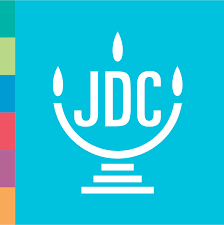What spinal problems do you see and diagnose:
A) TB of the spine
Tuberculosis (Mycobacterium tuberculosis, a bacteria) is well-known as a lung disease, but it can actually affect most organs. Once TB droplets are inhaled, they may stay in the lung, or go into the bloodstream and end up in the spine, the brain, the hip, other joints, the kidney, and the lining of the heart. We see all these diseases.
Tuberculosis of the spine, also known as Pott’s Disease, was first described by British surgeon Percivall Pott in 1799. Pott noted “that kind of palsy of lower limbs, which is frequently found to accompany a curvature of the spine.” TB of the spine generally causes a V-shape spine, which is straight from the front (AP view) but a V on the side (lateral view).
We make this diagnosis with x-rays, blood tests, and CT scan, looking for signs of bony destruction.
While treatment with standard tuberculosis drugs (typically INH, rifampin, PZA, and ethambutol) for about 9 months can be curative to eliminate the infection, often the patient is left with a spinal deformity, which can only be treated with surgery.
About 1/3 of our spine deformities are caused by TB; we have evaluated about 1000 TB spine patients. We see multiple complications, including spasticity, paralysis, incontinence, and chronic drainage (psoas abscess).
Surgery is possible, but may be quite difficult. It involves removal of bone (osteotomy) or even whole vertebrae (VCR – vertebral column resection). We have had patients who needed up to 5 vertebrae removed at 1 time, which is done by Dr Boachie and team at FOCOS Hospital in Ghana.
BCG vaccine, which is used in Ethiopia, helps decrease the rate and the severity of spinal TB.
We get several new TB spine patients every week.
Reference:
Tuli SM: Historical aspects of Pott’s disease (spinal tuberculosis) management.
European Spine Journal 2013 June; 22(Suppl 4): 529-538.
B) Neurofibromatosis (NF) is a genetic condition, which causes dark spots on the skin (café-au-lait spots), as well as spinal deformities in over 20% and unique eye problems (Lisch nodules). Patients often have learning differences as well. There are 3 types of NF. We frequently deal with NF type 1 – about 5% of our patients are affected by this.
This can be transmitted in an autosomal dominant fashion from either parent (meaning a child has a 50% chance of getting this), or, more commonly, a new mutation.
We also see giant plexiform neurofibromas, weighing up to 30 pounds, in some patients, which are very challenging to remove. One patient required over 12 hours of surgery over 2 days by a visiting plastic surgeon.
NF is a cause of great concern to us – these patients are more difficult, and have a higher rate of complications. Their rate of good surgical outcomes may be decreased as well.
We believe we have discovered a possible new form of NF in our Ethiopian patients.
Reference:
Crawford AH, Herrer-Soto J: Scoliosis associated with neurofibromatosis.
Orthopedic Clinics of North America 2007; Oct;38(4):553-562. Review.
C) SCOLIOSIS:
Scoliosis refers to a lateral bending of the spine. From behind, scoliosis patients have a curved spine, which may arc, or may have an S-shape. About 2%-3% of the population has scoliosis, though perhaps only 1/10 of scoliosis patients ultimately need surgery.
Scoliosis may originate at birth (congenital origin) - often associated with spinal cord and rib abnormalities, or it may be of idiopathic (unknown) cause. Congenital scoliosis patients more often have left-sided curves.
“In developed countries, a patient is likely be followed by a physician if their scoliosis curve is greater than 10 degrees.
Surgery is often recommended when scoliosis curves are greater than about 50 degrees.
